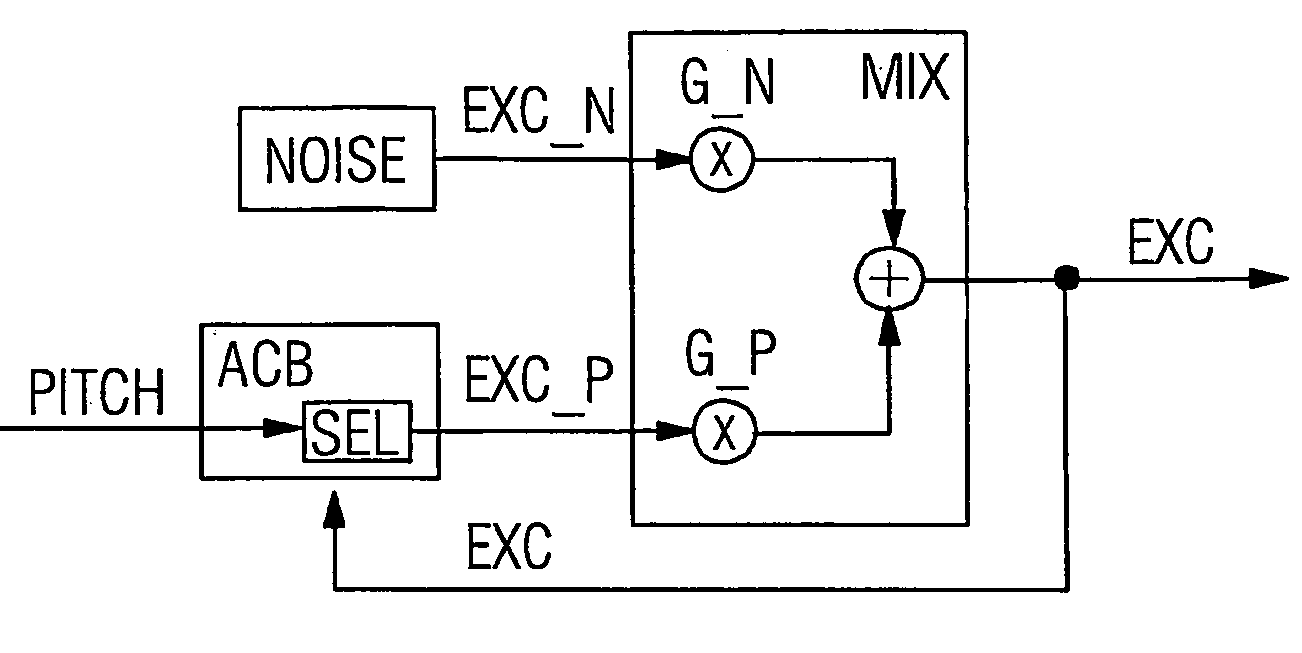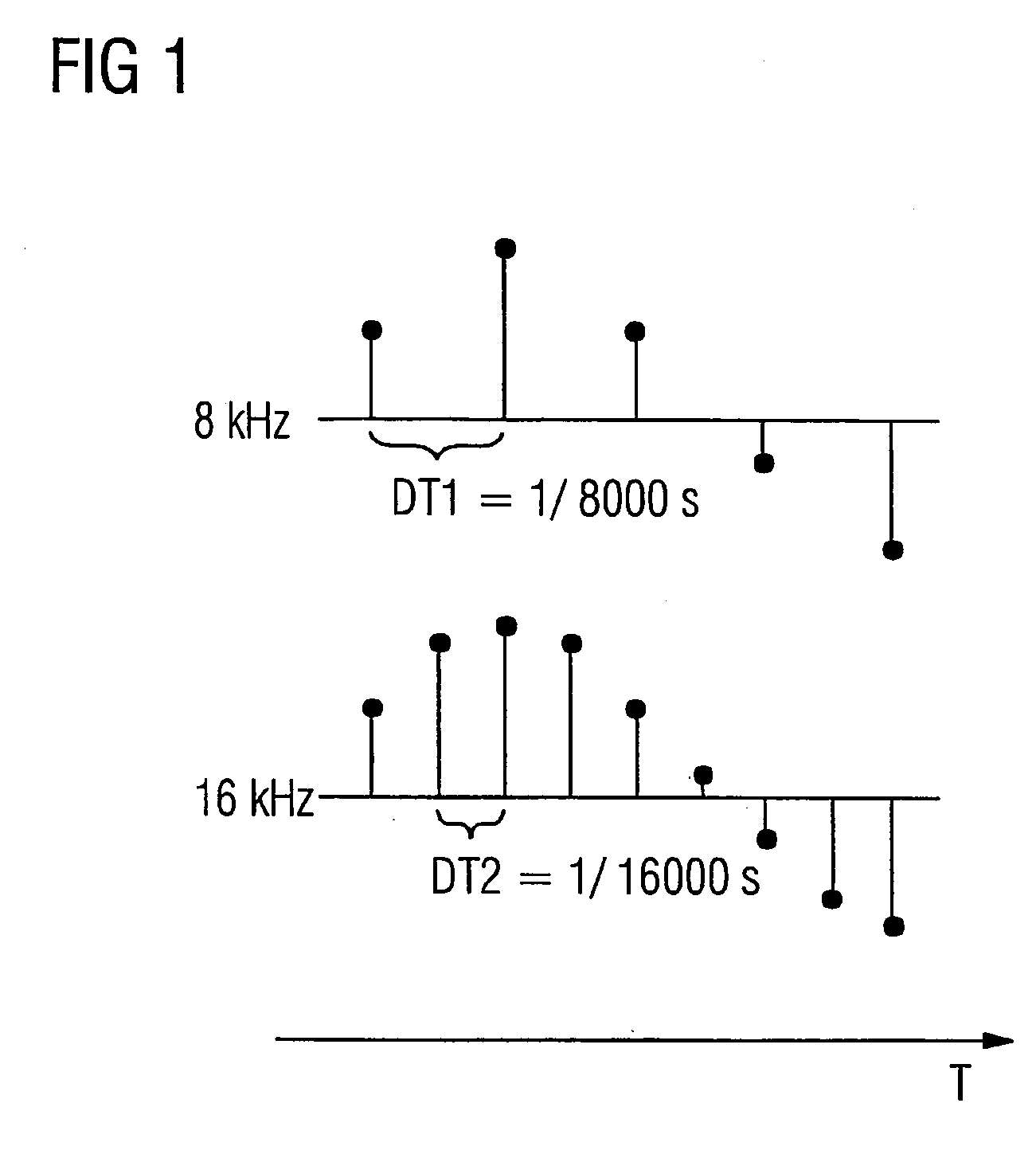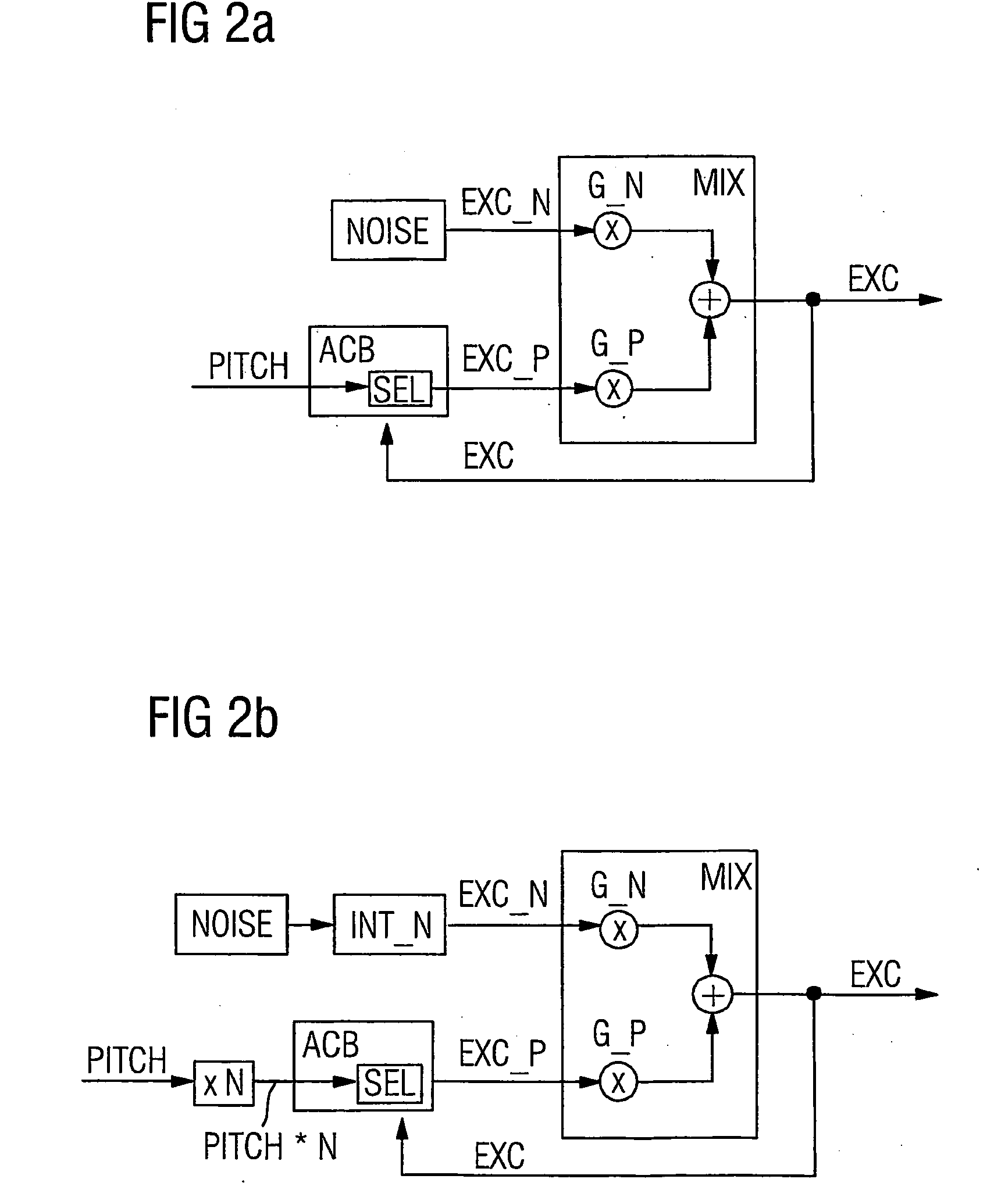Method and Arrangements for Coding Audio Signals
- Summary
- Abstract
- Description
- Claims
- Application Information
AI Technical Summary
Benefits of technology
Problems solved by technology
Method used
Image
Examples
Embodiment Construction
[0036]FIG. 1 shows an audio signal sampled at different exemplary sampling rates. Individual sampled values are shown here as dots, having different amplitudes shown by vertical lines. The different sampling rates are illustrated by different temporal sampling intervals between the sampled values. Both partial figures have a common time axis T.
[0037]The upper partial figure shows the audio signal sampled at a sampling rate of 8 kHz for example. The sampling rate of 8 kHz corresponds to a sampling interval DT1 of 1 / 8000 s. Audio signals essentially up to a frequency of 4 kHz can be shown by the sampled values sampled at a sampling rate of 8 kHz according to a fundamental sampling theorem. This frequency range is hereafter referred to as narrowband.
[0038]The lower partial figure illustrates the audio signal sampled at a sampling rate of 16 kHz. In accordance with the sampling rate, which is double the sampling rate of the upper partial figure, the sampling interval DT2 in the lower pa...
PUM
 Login to View More
Login to View More Abstract
Description
Claims
Application Information
 Login to View More
Login to View More - R&D
- Intellectual Property
- Life Sciences
- Materials
- Tech Scout
- Unparalleled Data Quality
- Higher Quality Content
- 60% Fewer Hallucinations
Browse by: Latest US Patents, China's latest patents, Technical Efficacy Thesaurus, Application Domain, Technology Topic, Popular Technical Reports.
© 2025 PatSnap. All rights reserved.Legal|Privacy policy|Modern Slavery Act Transparency Statement|Sitemap|About US| Contact US: help@patsnap.com



